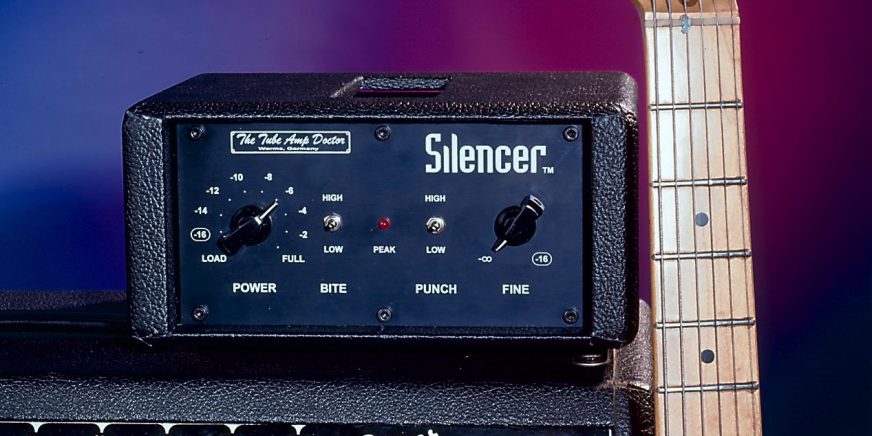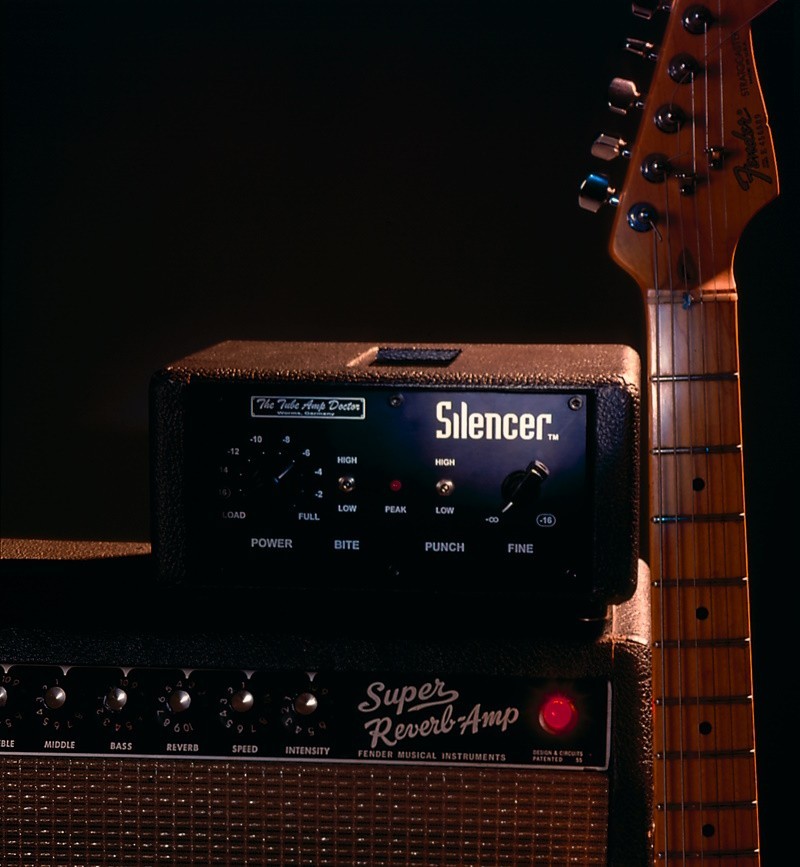« Achieving the perfect tube sound with a power attenuator or loadbox for guitar amplifiers »
or, how can I crank up my amplifier and still keep the volume in check?
To achieve the perfect guitar sound, there’s no way around a tube amplifier. These amps deliver natural distortions and harmonic overtones that no other amplifier technology has been able to match; at best, they can only approximate it. However, tubes also have a drawback: To find that perfect sound, tube amplifiers sometimes require immense volumes – think tube saturation. Fortunately, this phenomenon was recognized early, and the right technical solutions were developed to address it. Today, we introduce the load box and the attenuator – two devices that counteract the volume addiction of powerful amplifiers, effectively transforming them into quiet tube amplifiers without sacrificing the features often only found in large and professional amplifiers.
Power Attenuator or Load Box? Silencer, Power Soak, Power Break, and More – Definitions
There are many ways to reduce the volume of a tube amp while running it at full power. Unfortunately, many guitarists and musicians are not familiar with the various components, and the terms are often confused. Here’s an explanation of the most common terms related to these devices.
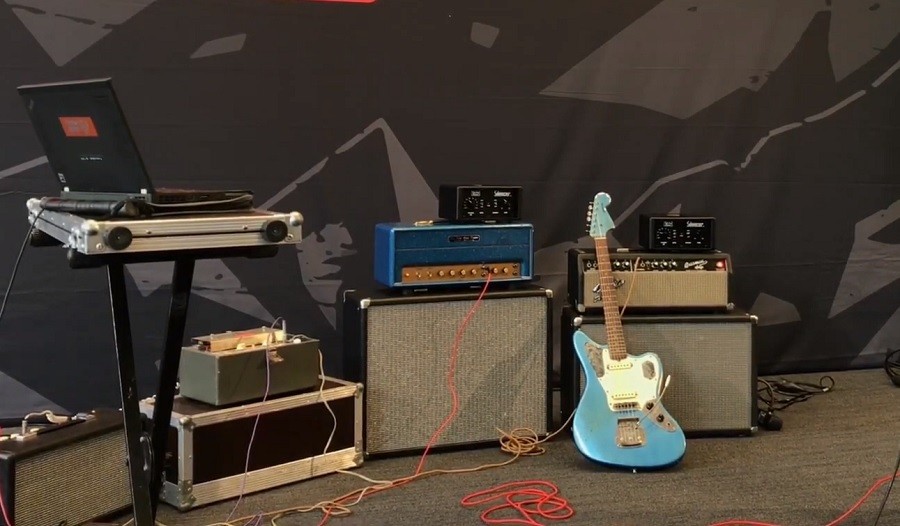
Power Attenuator – The General Term
A power attenuator is any device operated to reduce the volume between the amplifier output and the speaker. The amplifier can work to produce the best sound, with all its capabilities pushed to saturation, while the power attenuator regulates the portion of power sent to the speakers and dissipates the rest of the power elsewhere.
Load Box – The Simplest Form
Typically, when a tube amplifier is powered on, it is connected to a corresponding speaker at the amplifier’s output. The speaker processes the output energy from the amplifier and transforms the signal into sound. But what happens when you want to run the tube amplifier without a connected speaker, such as for a late-night recording session?
To prevent significant damage to the amp, tube amplifiers must always have an appropriate load connected to the output transformer. This could be a speaker cabinet or a load box. The load box provides the necessary load for the amplifier to operate without speakers. Thist results in theamplifier operating happily but remaining silent. The signal is usually routed to a mixing board or recording device via a DI output, with or without speaker simulation.
Function of the Load Box
In essence, a load box operates like the simplest form of an attenuator (explained below), reducing the output of the power amp to a line-level without significantly affecting the amplifier’s sound. These dummy loads make it possible to record the tube’s sound at a manageable volume through a computer interface.
Another possibility arises from the combination of a load box and an additional power amp. The original signal from the tube amp is reduced to line-level through the load box, then directed to the power amp’s tubes, where it is brought to the desired volume – providing the perfect signal at the required volume!”
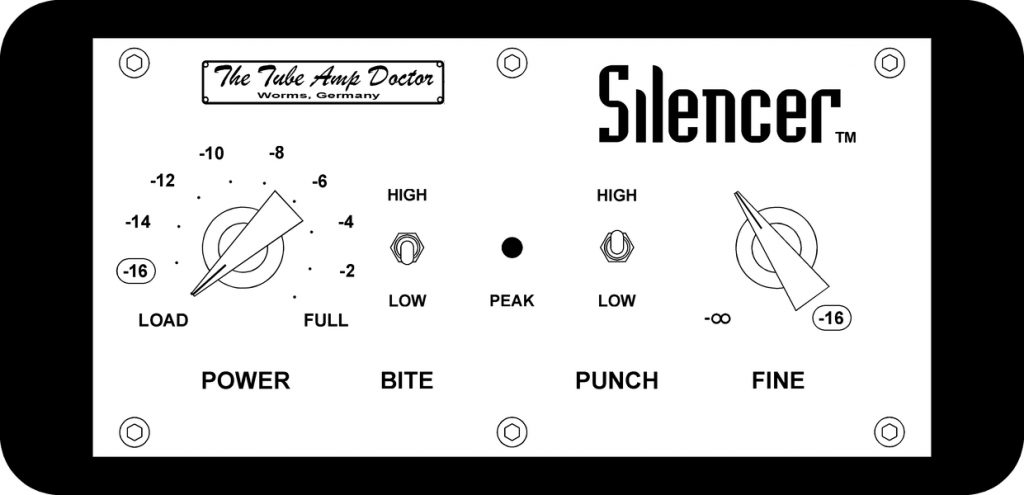
Applications of Load Boxes
Due to their simplicity, load boxes offer a wide range of different applications. We’ve already mentioned recording and the option to route the amplifier’s signal to a power amp. Load boxes also provide other options, such as silent practice without connected speakers or the ability to use the amplifier even when there are no speakers connected and bring the desired signal to the right level.

However, it should be noted that when it comes to recording and other applications, a load box doesn’t provide the typical characteristics of a speaker and the wood of the speaker cabinet or other connected cabinets. The final signal of an amp consists not only of the tubes but also of the tonal characteristics of the speaker cabinet – these are absent when using a load box. Therefore, it is necessary to use a so-called speaker simulation or speaker emulation. This can be achieved through analog speaker simulators, software solutions, or load boxes with integrated speaker simulations. If you intend to record the sound using a load box, it’s a good idea to have a quality speaker simulation.
Tip: the TAD Silencer includes an excellent speaker emulation in addition to the LOAD function.
Attenuator – When Volume Flexibility is Needed
An attenuator is a device that reduces the output volume of a tube amplifier by a certain percentage without affecting the saturation of the sound or the tubes. The adjustable nature of the attenuator is the clear distinction from a load box.
Function of the Attenuator
The attenuator is placed in the signal chain between the amplifier and the speaker. The signal reduced by the device is routed through the device’s signal path and sent to the speakers. Some models can also be used as load boxes, as they offer a way to reduce the power amp output to a line level and send it directly to a connected recording device.
Some attenuators (as well as the corresponding load boxes) have integrated speaker simulations to provide full control over the sound during recording. Graphic equalizers and other tools can also be included in the attenuators.
To effectively reduce the volume, a certain percentage of the output power is converted into heat. After all, the energy has to go somewhere.
Intended use for an Attenuator
The ability to enjoy the full sound of a saturated power amp at room volume offers various advantages. Guitarists can work with their familiar equipment without worrying about different volume requirements. It also allows you to adapt the volume to suit various settings, avoiding spatial influences on the sound. Whether it’s rehearsals with quieter instruments, practicing at home, or live recording, high-quality attenuators can effectively control the volume of a powerful 100 W full-stack.
So, which attenuator is the best or, even better, the right one for my needs? Power Soak, Power Break, Hot Plate, Ironman, MiniMass, RockCrusher, Powerhouse, or the TAD Silencer?
Tom Scholz’s Power Soak was probably the first attenuator to be marketed. The device’s function is excellently described by its onomatopoeic name. The Power Soak “sucks up the dB power from the amp (and thus the excess dB) and converts the amp’s energy into heat. In the following years, models of power attenuators and load boxes from several professional manufacturers followed.
What should I consider when selecting a power attenuator?
Now it gets interesting because it’s not that simple, and you can easily make a wrong choice.
1. Power Rating of an Attenuator or Loadbox:
The power handling capacity of the attenuator or loadbox must always be at least equal to or greater than the amplifier’s maximum output power. This is quite clear: if a 100W Marshall, for example, may actually deliver 120W at full throttle, and the attenuator should handle that, it needs to handle at least that 120 watts. A 50W attenuator would overheat and potentially cause significant damage, not only to itself but also to its surroundings. It’s important to note that the nominal output power of a tube amplifier also refers to the clean, undistorted signal. When the power amp is pushed into saturation, it often can deliver a lot more. Rule of thumb: Always ensure that the power rating of an attenuator or loadbox is at least 50% higher than the amplifier’s nominal power.
2.Impedance of an Attenuator or Loadbox:
Correct impedance matching is essential for good sound without losing highs, lows, depth, and definition. Not only should it be on paper, but in every single setting. Unfortunately, many models are compromised in this regard, which is often reflected in the product’s price. Precision at high power comes at a cost. The cost of the tires of a sports car is in a different league than that of a small car.
3. Attenuation Steps on an Attenuator:
There are models with only 3 steps, in coarse 4dB steps, and models with 2dB steps. When recording or practicing alone, this might not seem very relevant, but in a band context or on stage, it’s crucial to be able to adjust the volume without sacrificing the amplifier’s sweet spot. If you intend to use the attenuator for rehearsals or live performances, finer adjustment of the attenuation steps is better.
4. Speaker Emulation or Unfiltered DI?
For re-amping, a direct DI might be useful, but for recording or in a band context, speaker emulation replaces the microphone to capture the amp’s sound.
5. Active or Passive:
Passive devices don’t require a power supply, so there’s no need to worry about batteries, chargers, or finding an available power socket.
Where are the advantages and disadvantages of the various devices?
I’ll provide a general overview here: the higher the power handling capacity, the more versatile it is. If you buy a 50W attenuator for your 30W amplifier, everything is fine. However, when you have a powerful 100W amp, you’ll need another attenuator. That’s why I’d consider a 150W version ideal because it should cover more than 99% of the amplifiers on the market. This way, you avoid buying multiple devices when you only need one.
Impedance: For devices that claim to work with all impedances according to the manufacturer, I would recommend verifying if that’s true. High-priced models around €1200 or more probably can, but a €99 device with 100 watts or more most likely can’t.
TAD Silencer
The TAD Silencer is a passive power attenuator with loadbox functionality, an integrated speaker emulation, and various boost and fine-tuning settings.
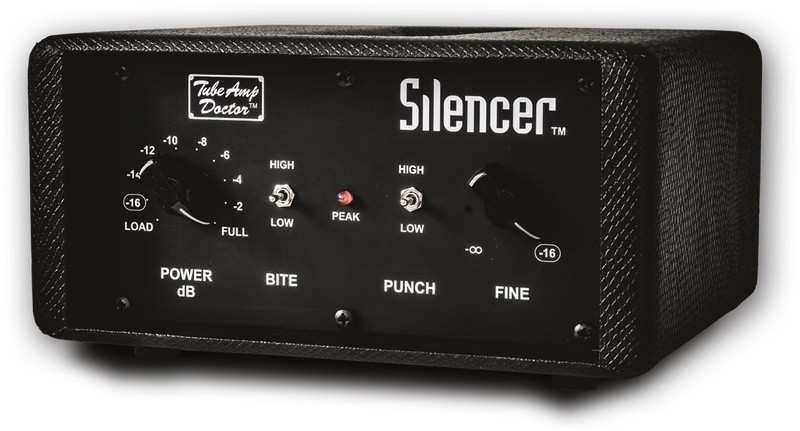
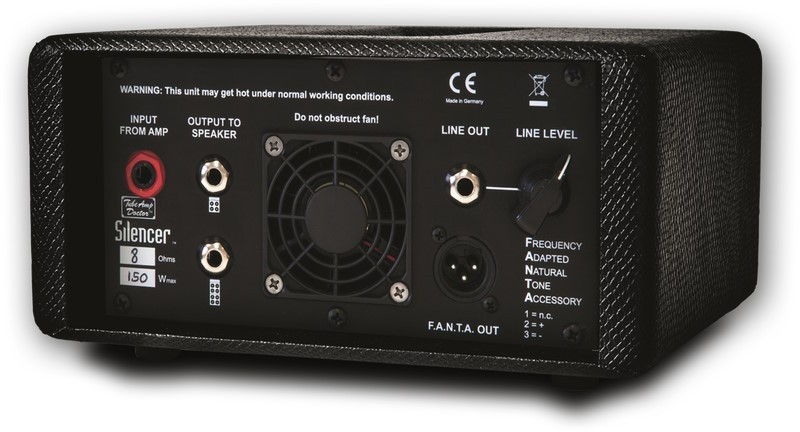
Attenuators and load boxes – Conclusion
Whether you’re using a load box for recording or an attenuator to control volume, managing volume is achievable. Choosing the right device for your needs is crucial for achieving the desired results. Tube amplifiers are known for being particular when it comes to getting the perfect sound. They either deliver the ideal clean signal with incredible clarity and fail to produce gain, or they require high volumes to reach their full potential. With a load box or an attenuator, you can play your amplifiers at their sweet spot and achieve that truly perfect tube sound without disrupting the band or annoying the neighbors.
______________________________________________________________________________________________________________________________
Image source:
Electric guitarist in the studio: © JAVIER LARRAONDO – stock.adobe.com
 Tubeampdoctor Magazin
Tubeampdoctor Magazin
